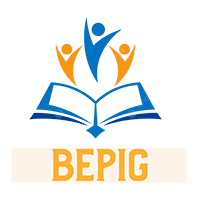Loans are a fundamental aspect of personal finance, enabling individuals and businesses to access funds for various purposes. Understanding the different types of loans, their features, and the borrowing process is essential for making informed financial decisions. This guide aims to demystify loans by providing detailed insights into their types, purposes, and considerations before borrowing.
What is a Loan?

A loan is an agreement between a borrower and a lender where the lender provides a sum of money to the borrower with the expectation that it will be repaid over time, usually with interest. Loans can be categorized based on various criteria, including their purpose, security, and repayment terms.
Types of Loans
Loans can be broadly classified into two main categories: secured and unsecured loans.
Secured Loans
Secured loans require the borrower to pledge an asset as collateral. This collateral serves as security for the lender in case the borrower defaults on the loan. Common types of secured loans include:
- Mortgages: Used to purchase real estate, where the property itself acts as collateral. Mortgages typically have long repayment terms ranging from 10 to 30 years and lower interest rates compared to unsecured loans.
- Auto Loans: These are used to finance the purchase of vehicles. The vehicle serves as collateral, and repayment terms usually range from 12 to 84 months.
- Home Equity Loans: These allow homeowners to borrow against the equity in their home. They can be used for various purposes, including home improvements or debt consolidation.
Unsecured Loans
Unsecured loans do not require collateral, making them riskier for lenders. As a result, they often come with higher interest rates. Common types include:
- Personal Loans: These can be used for a variety of personal expenses such as medical bills or vacations. They typically have fixed interest rates and repayment terms ranging from 12 to 84 months.
- Student Loans: Designed to help students finance their education, these loans often have lower interest rates and flexible repayment options.
- Credit Cards: A form of revolving credit that allows borrowers to make purchases up to a certain limit without collateral.
Key Features of Different Loan Types

Understanding the features of various loan types helps borrowers choose the right option based on their financial needs.
| Loan Type | Purpose | Loan Length | Interest Rates | Credit Check | Collateral Required |
|---|---|---|---|---|---|
| Personal Loan | General expenses | 12 to 84 months | Up to 36% APR | Yes | Sometimes |
| Mortgage | Purchasing a home | 10 to 30 years | Averaging 7.90% for 30 years | Yes | Yes |
| Auto Loan | Financing a vehicle | 12 to 84 months | Starting at 4.50% APR | Yes | Yes |
| Home Equity Loan | Home improvements or debt consolidation | 5 to 30 years | Starting at 7.99% APR | Yes | Yes |
| Student Loan | Financing education | Varies (10-30 years) | Starting at 4.24% APR | Yes | No |
| Credit Card | Everyday purchases | Revolving | Varies | Yes | No |
The Loan Process
The process of obtaining a loan involves several steps:
- Application: The borrower submits an application detailing their financial history, income, and purpose for borrowing.
- Credit Assessment: Lenders review the applicant’s credit score, income level, and debt-to-income ratio to assess creditworthiness.
- Approval/Denial: Based on the assessment, lenders either approve or deny the application. If approved, they provide loan terms including interest rate and repayment schedule.
- Signing Agreement: Both parties sign a contract outlining all terms and conditions before disbursing funds.
- Disbursement: Once the agreement is signed, the lender disburses the loan amount.
- Repayment: The borrower repays the loan according to the agreed schedule until the total amount plus interest is paid off.
Considerations Before Borrowing
Before taking out any loan, borrowers should consider several factors:
- Budget Review: Assess your monthly budget to ensure you can afford the loan payments without straining your finances.
- Interest Rates: Compare interest rates from different lenders; even small differences can significantly impact total repayment amounts over time.
- Loan Terms: Understand the repayment terms—shorter terms may mean higher monthly payments but less total interest paid.
- Credit Score: A higher credit score often results in better loan terms; check your credit report before applying.
- Purpose of Loan: Clearly define why you need the loan and ensure it aligns with your financial goals.
Common Pitfalls in Borrowing

Borrowers should be aware of common pitfalls that can lead to financial strain:
- Over-Borrowing: Taking on more debt than you can handle can lead to financial distress; only borrow what you need.
- Ignoring Fees: Some loans come with hidden fees (origination fees, prepayment penalties) that can increase overall costs.
- Neglecting Repayment Plans: Failing to create a solid repayment plan can result in missed payments and damage your credit score.
Conclusion
Understanding loans is crucial for making informed financial decisions that align with personal or business goals. By familiarizing yourself with different types of loans, their features, and the borrowing process, you can navigate your financial landscape more effectively. Always consider your budget and financial health before borrowing money, as responsible borrowing can lead to opportunities while reckless borrowing can lead to significant challenges.
This comprehensive overview serves as a guide for anyone considering taking out a loan—whether it’s for personal use or business expansion—ensuring that you are well-prepared before making such an important financial commitment.
Also Read : From Personal to Business: Exploring the Different Types of Loans



